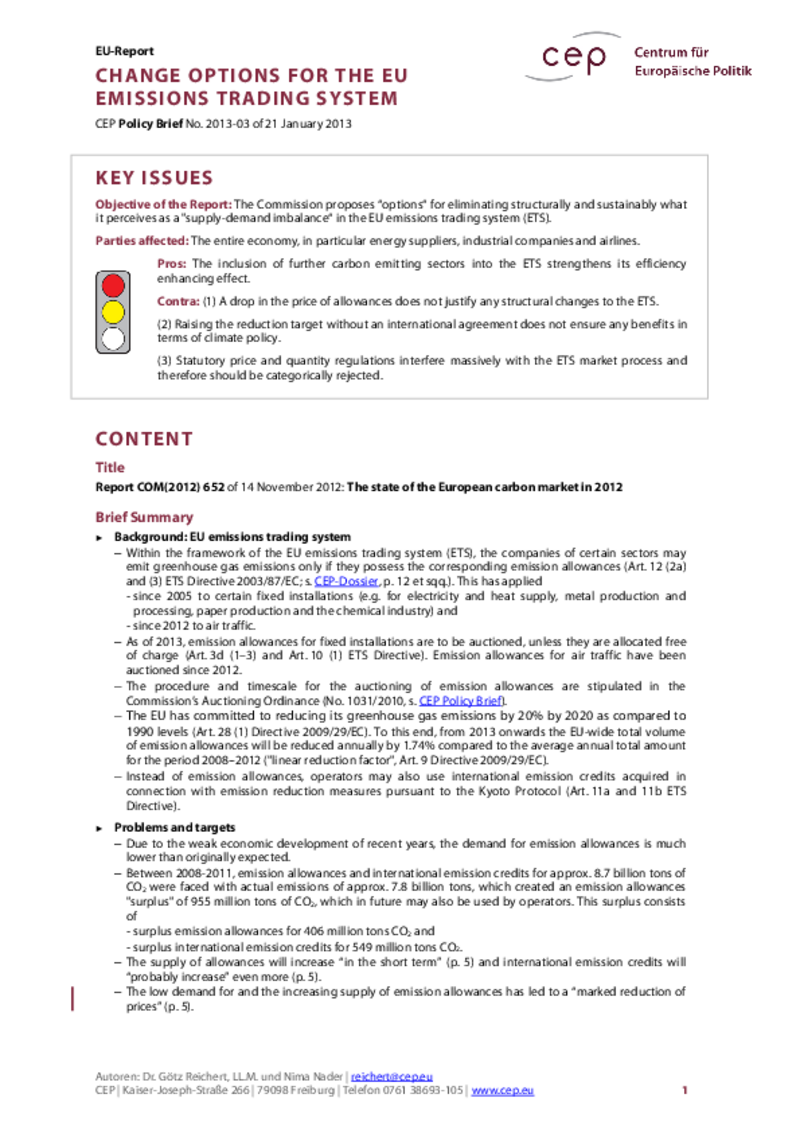
cepPolicyBrief
Climate
Change Options for the EU Emissions Trading System (Report)
cepPolicyBrief
A drop in allowance prices does not justify any structural changes in the ETS, as this drop is not caused by a dysfunction in the market. Raising the carbon reduction target to 30% without an international agreement does not ensure any benefits in terms of climate policy, since it simply leads to carbon leakage. Statutory price and market regulations undermine the market-based character of ETS and therefore should be categorically rejected. The inclusion of further carbon emitting sectors in the ETS fosters its efficiency enhancing effect.
Download PDF
| Change Options for the EU Emissions Trading System COM(2012) 652 (publ. 05.16.2014) | 92 KB | Download | |
 | |||



